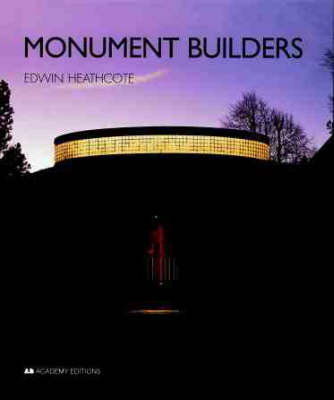Academy Builders S.
2 total works
The bank building has become a pivotal part of our cities and our suburbs. Both public and private; secure and yet welcoming, bank architecture needs to embody our desire to see that our money is secure; yet welcome us and make us feel a part of the arcane and often impenetrable financial process. A paradoxical mix of alienation and embrace, it is a challenge which has faced architects since the Renaissance. In this book Edwin Heathcote examines the roots of the architecture of banking - from the money changers' stalls to the palaces and banking houses of the Florentine dynasties; through the developments of modern banks and exchanges to the incredible changes and radical departures which recent banking buildings embody. Using some the best recent examples of the architecture of banking and exchange, the author attempts to se patterns in the recurrence of certain banking archetypes which persist even today and to examine some of the buildings which set new precedents and innovative patterns for change and adaptation.
Bank Builders covers the work of a great range of international architects including Foster Associates, KPF, Cesar Pelli, Gunther Behnisch, Erick van Egeraat, Mario Botta and Frank O Gehry. In putting the work of these architects into the context of the work of their forebears, from John Soane to Otto Wagner, the author hopes to show that banks and financial institutions - despite their often conservative image - have been at the heart of the most interesting and radical architectural commissioning over the last century. EDWIN HEATHCOTE is an architect and writer working in London. He has written a number of books on architecture including Monument Builders, Church Builders and Imre Makovecz: The Wings of the Soul for Wiley-Academy. He also writes on architecture for the Financial Times and a number of architectural journals.
Bank Builders covers the work of a great range of international architects including Foster Associates, KPF, Cesar Pelli, Gunther Behnisch, Erick van Egeraat, Mario Botta and Frank O Gehry. In putting the work of these architects into the context of the work of their forebears, from John Soane to Otto Wagner, the author hopes to show that banks and financial institutions - despite their often conservative image - have been at the heart of the most interesting and radical architectural commissioning over the last century. EDWIN HEATHCOTE is an architect and writer working in London. He has written a number of books on architecture including Monument Builders, Church Builders and Imre Makovecz: The Wings of the Soul for Wiley-Academy. He also writes on architecture for the Financial Times and a number of architectural journals.
A thoughtful exploration of modern architectural monuments and memorials Structures built in response to death pose unique architectural challenges-challenges that transcend the physical to encompass symbolism, beliefs, and culture. Monument Builders highlights this rarely discussed yet fascinating building type, exploring the links between different perceptions of death and their expression in architecture over the course of the twentieth century. Sensitive but never somber, it features the work of an impressive international roster of architects as it moves from neo-classicist and modernist treatments of death to holocaust memorials and other difficult projects.

